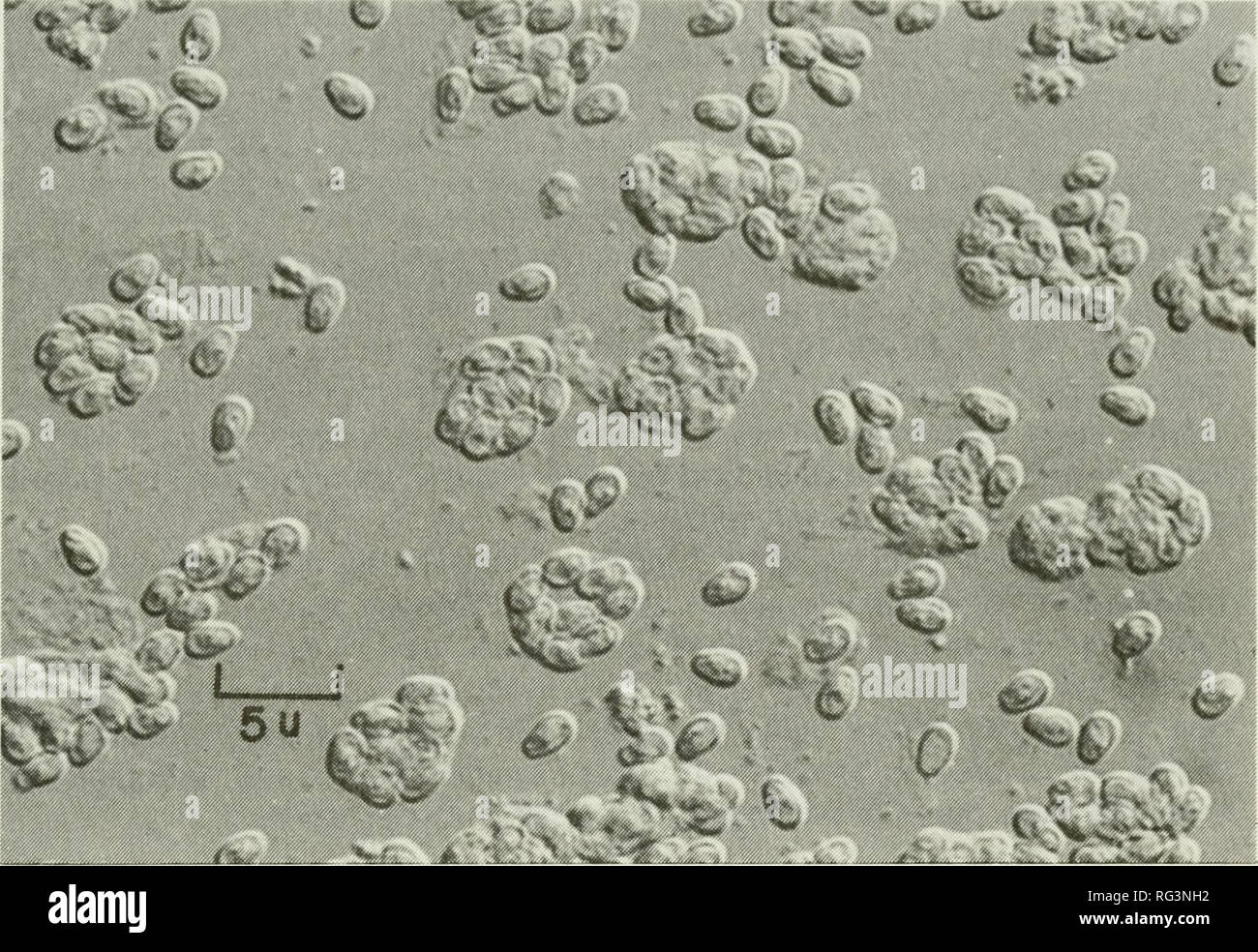. California fish and game. Fisheries -- California; Game and game-birds -- California; Fishes -- California; Animal Population Groups; Pêches; Gibier; Poissons. PARASITISM OF CRAYFISH 181. FIGURE 3. Photograph (900x) of" phase contrast slide of preserved crayfish abdominal muscle showing the pansporoblasts and spores of a microsporidian parasite identified as Thelohania contejeani. Photograph by junior author. DISCUSSION Cossins (1973) states that such factors as waterflow, crayfish density, and the extent of cannibalism may affect the spread of T. contejeani. With the comple- tion of Ne

Image details
Contributor:
Book Worm / Alamy Stock PhotoImage ID:
RG3NH2File size:
7.1 MB (659.8 KB Compressed download)Releases:
Model - no | Property - noDo I need a release?Dimensions:
1905 x 1311 px | 32.3 x 22.2 cm | 12.7 x 8.7 inches | 150dpiMore information:
This image is a public domain image, which means either that copyright has expired in the image or the copyright holder has waived their copyright. Alamy charges you a fee for access to the high resolution copy of the image.
This image could have imperfections as it’s either historical or reportage.
. California fish and game. Fisheries -- California; Game and game-birds -- California; Fishes -- California; Animal Population Groups; Pêches; Gibier; Poissons. PARASITISM OF CRAYFISH 181. FIGURE 3. Photograph (900x) of" phase contrast slide of preserved crayfish abdominal muscle showing the pansporoblasts and spores of a microsporidian parasite identified as Thelohania contejeani. Photograph by junior author. DISCUSSION Cossins (1973) states that such factors as waterflow, crayfish density, and the extent of cannibalism may affect the spread of T. contejeani. With the comple- tion of New Melones Dam, the lotic habitat of the Stanislaus River supporting the Thelohania infected population has been transformed into a lentic habitat. The level of the old Melones Reservoir at maximum storage (Figure 1) was 224 m above sea level and the capture site is 247 m above sea level. The maximum storage expected behind the New Melones Dam during 1982 will raise the reservoir level to 283 m, and the minimum expected storage will drop the reservoir level to 257 m (U.S. Dept. of the Interior, Bureau of Reclamation, unpubl. data). Not enough is known about the environmental parameters that affect Thelohania to predict how this habitat change will effect the level of infection in the crayfish population or the possible spread of Thelohania to other crayfish populations. This is the first record of the occurrence of T. contejeanihom western North America and the first report of infection in a member of the genus Pacifastacus. If past trends are repeated, T. contejeanica^u be expected to spread downstream to the Delta population of P. leniusculus where it may have an adverse impact on the commercial fishery. The capture site is separated from the commercial fishing grounds of the Delta by two dams and about 200 km of river. The disease is apparently not now present in the Delta. Over 30, 000 P. leniusculus from the commercial catch in the Sacramento-San Joaquin Delta were measured